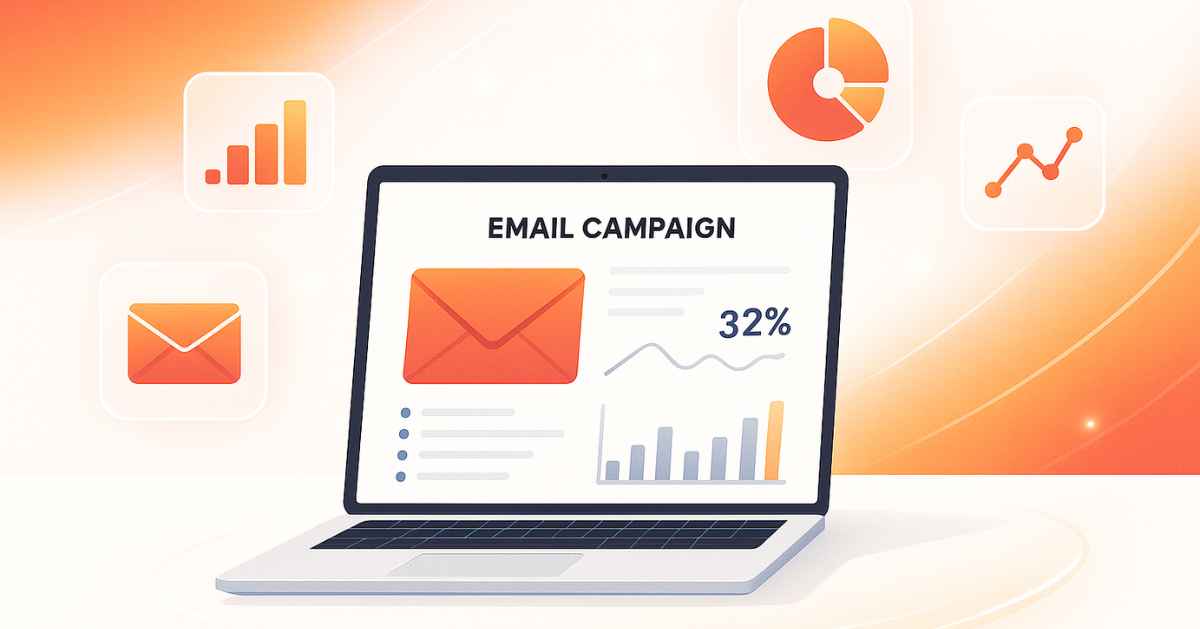Email marketing remains one of the most powerful digital marketing tools. Despite the rise of social media, AI-driven advertising, and influencer marketing, emails continue to deliver consistent ROI for businesses of all sizes. But like every marketing strategy, email marketing has its own advantages and disadvantages understanding both can help you use it more effectively.
What Is Email Marketing?
Email marketing is the process of sending promotional, educational, or personalized messages directly to a list of subscribers through email. It’s used for:
- Promoting products or services
- Building brand relationships
- Sharing news or updates
- Driving sales and website traffic
From welcome emails and newsletters to product recommendations and re-engagement campaigns — email marketing serves as a direct communication bridge between a brand and its audience.
Advantages of Email Marketing
Let’s start with the good side — the powerful benefits that make email marketing a must-have in every digital strategy.
1. High Return on Investment (ROI)
Email marketing consistently delivers one of the highest ROIs in the digital marketing world. According to industry research, for every $1 spent on email marketing, businesses earn an average of $36–$40 in return.
Why? Because it’s cost-effective. You don’t need to spend heavily on ad placements or influencer collaborations. With the right audience and message, even small campaigns can generate impressive results.
2. Direct and Personalized Communication
Unlike social media, where your post might get lost in the algorithm, emails land directly in the user’s inbox. This gives you a one-to-one communication opportunity.
Modern email tools also allow personalization — you can send emails using the recipient’s name, location, purchase history, or preferences. Personalized emails increase open rates and engagement dramatically.
3. Builds and Strengthens Customer Relationships
Email marketing helps brands stay connected with their audience over time. Sending regular newsletters, exclusive deals, or useful content helps your audience trust your brand.
For example, a skincare brand that sends weekly skincare tips builds authority and emotional connection with readers — not just sales.
4. Easy to Track and Measure
Every email campaign comes with detailed analytics. You can track:
- Open rates
- Click-through rates (CTR)
- Conversions
- Unsubscribes
- Bounce rates
This data helps you understand what works and optimize future campaigns. In short, you can easily measure success and make data-driven decisions.
5. Automation Saves Time
With automation tools like Mailchimp, HubSpot, or Sendinblue, you can set up automated workflows like welcome emails, cart reminders, or birthday discounts that run without manual effort. This allows you to nurture leads 24/7 while focusing on other business areas.
6. Cost-Effective for All Business Sizes
Email marketing is one of the most affordable channels available. Whether you’re a small startup or a large enterprise, you can start with minimal investment and scale as you grow. Many platforms offer free tiers for small subscriber lists, making it ideal for beginners.
7. Drives Traffic and Boosts Conversions
A well-crafted email with strong CTAs (calls to action) can drive massive traffic to your website, blog, or online store.
For instance:
- Announce new blog posts
- Promote flash sales
- Launch new products
Every click from your email can turn into a potential sale or lead.
8. Eco-Friendly and Instant
Unlike print marketing, email marketing is eco-friendly and instantaneous. You can reach thousands of people in seconds — without wasting paper or resources. Plus, there’s no waiting period for results; you can see engagement in real time.
Disadvantages of Email Marketing
While email marketing is powerful, it’s not perfect. If not done strategically, it can backfire and hurt your brand image. Here are some disadvantages to be aware of.
1. Spam and Deliverability Issues
One of the biggest challenges in email marketing is spam filters. If your emails aren’t properly formatted, or you use spammy subject lines like “100% FREE!!!”, they might land in the spam folder instead of the inbox.
Additionally, purchasing email lists or sending irrelevant content can trigger high unsubscribe or complaint rates.
Pro Tip: Always use permission-based lists and clean your email database regularly.
2. Requires a Quality Subscriber List
Without a targeted and engaged audience, email marketing won’t work. Building an organic list takes time and buying lists is risky and often ineffective. An unqualified list can lead to low open rates, high bounce rates, and even account suspensions from email service providers.
3. Content Fatigue
Consumers receive dozens of marketing emails every day. If your emails are not creative, relevant, or timed properly, they may be ignored or deleted.
Overusing promotional content without adding value can lead to email fatigue and unsubscribes.
Solution: Balance promotions with useful content — like tips, tutorials, or insights.
4. Design and Technical Challenges
Not all emails look the same across different devices and email clients (like Gmail, Outlook, or Apple Mail). Poorly designed emails can appear broken or unreadable. You need responsive design, optimized images, and testing tools to ensure your email looks great everywhere.
5. Legal Compliance Issues (GDPR, CAN-SPAM)
Email marketing must follow privacy and anti-spam laws like GDPR (for EU audiences) or CAN-SPAM (for the U.S.). Failing to include an unsubscribe option or sending emails without consent can lead to penalties. Always provide a clear unsubscribe button and respect user privacy.
6. Time and Strategy Intensive
While automation helps, successful email marketing still needs planning, testing, and analysis. Writing compelling content, designing visuals, and segmenting audiences take time and creativity.
Best Practices to Maximize Email Marketing Success
To make the most of email marketing and overcome its challenges, follow these expert tips:
- Build your own email list — Never buy it. Use lead magnets like free guides, checklists, or discounts.
- Segment your audience — Send relevant emails to specific groups (e.g., new customers vs. loyal buyers).
- Personalize your emails — Use customer names, preferences, and behavior data.
- Optimize subject lines — Keep them short, catchy, and relevant.
- Use automation — Save time with triggered workflows (welcome, cart abandonment, etc.).
- Track performance metrics — Regularly analyze what’s working.
- A/B test your campaigns — Experiment with subject lines, content, and CTAs.
- Respect privacy and compliance — Always include unsubscribe links and obtain permission.
Following these best practices ensures your emails not only reach the inbox but also build genuine relationships and drive conversions.
Final Thoughts
Email marketing is here to stay and for good reason. It’s cost-effective, measurable, and one of the few digital channels that allow personalized, direct communication with your audience. However, to truly benefit from it, you must understand both the advantages and disadvantages. The key is balance focus on delivering value, maintaining consistency, and keeping your audience’s trust intact. When used strategically, email marketing can become your brand’s most profitable digital channel turning subscribers into long-term loyal customers.

